How to use Omada Cameras with Third-Party NVR, NAS or Software
Contents
Requirements
- Omada Cameras
- Third-Party NVR/NAS/Software
Introduction
It is recommended to use Omada Cameras with Omada NVR for easy access and management in batches. However, some clients may prefer to use third-party management platforms instead of Omada NVRs, especially if they already have their storage systems.
Omada Cameras support ONVIF Profile S/G/T and can be added to third-party NVRs, NASs, or software that also support the ONVIF protocol.
| Profile S (Streaming Video) |
Profile T (advanced video streaming |
Profile G (Recording and Storage) |
|
|
|
When ONVIF is not supported on the third-party device, Omada Cameras can also enable live streaming on third-party platforms via the RTSP protocol.
Configuration
Step 1. Connect the Omada Cameras to the third-party NVR according to the network topology below, ensuring they are on the same network.

Step 2. Log in to the Web Management Interface of each camera for initialization.
- Use the IP address of the Omada Camera to access its Web Management Interface. (The default IP address is 192.168.0.60.)
- Set the management password for the camera on the initialization page.
- Go to Settings > Network Settings > Connect, and mark down the current IP address. For some NVRs, you’ll need to modify the IP address of the Omada camera to be on the same network segment as the NVR for successful addition.
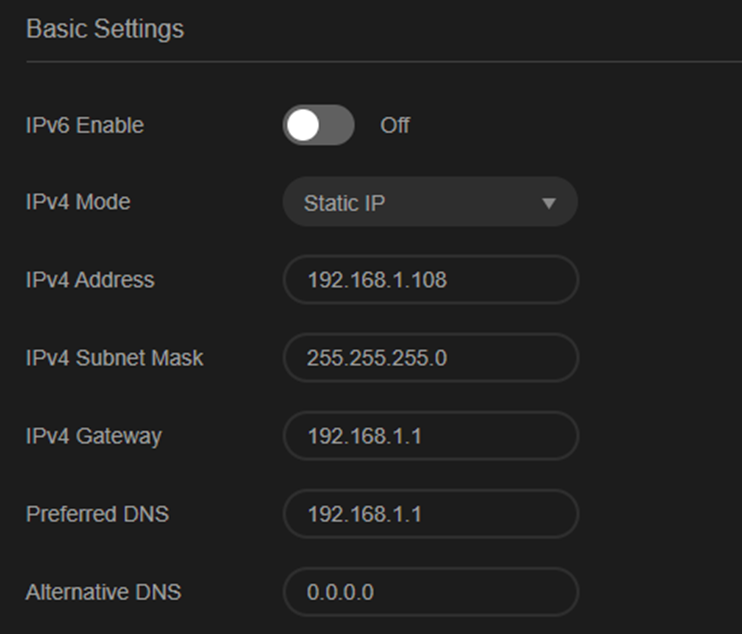
Step 3. Add the Omada Camera to the third-party device through ONVIF or RTSP.
- Added using the ONVIF protocol:
When the third-party device supports the ONVIF protocol, Omada Cameras can be added using the ONVIF protocol. Please go to Settings > Network Settings > Advanced > ONVIF to ensure that the ‘Open Network Video Interface’ is enabled. Default ONVIF Port: 80.
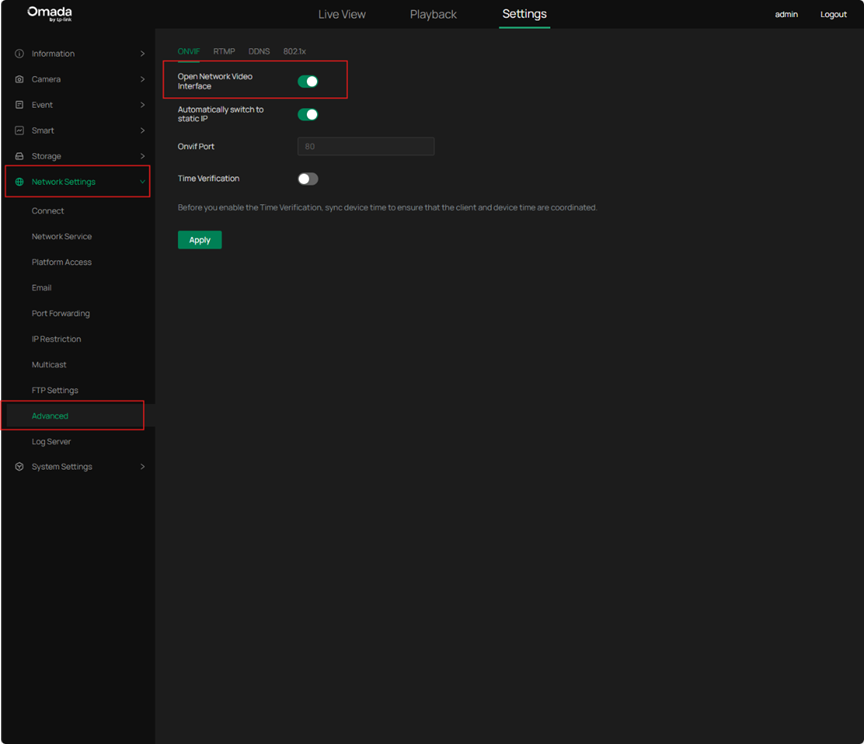
Configuration example: adding your Omada camera to iSpy software
Step 1. Run the iSpy software on your computer.
Step 2. Click ‘Add’ on the top left menu and select ‘ONVIF Camera’.
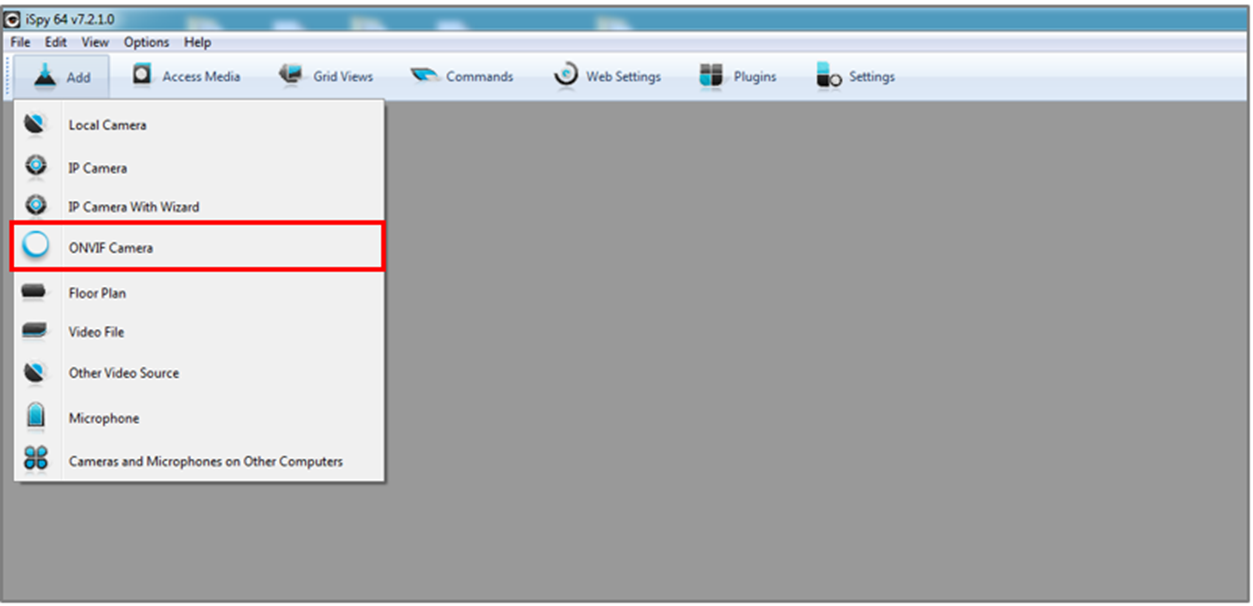
Step 3. Enter the Username and Password that you set for your camera on the pop-up window, select Network Address, and click Next. You can customize other parameters if needed.
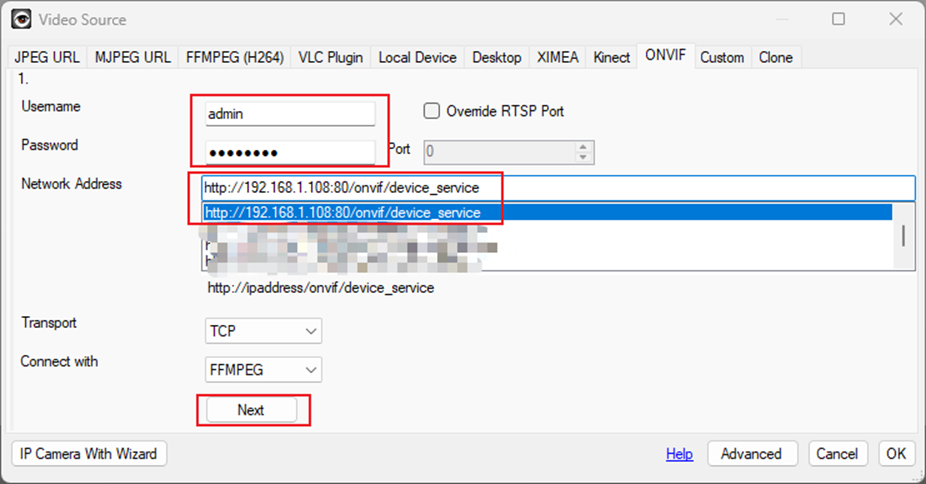
Step 4. Choose the video resolution and click OK.
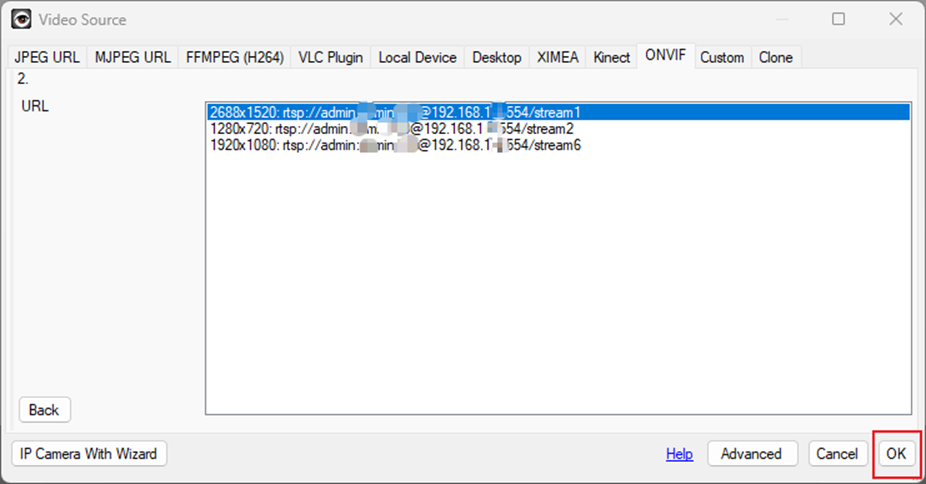
Step 5. Customize the camera settings as needed, including Microphone, Talk, Motion Detection, Alerts, Recording, Images, Scheduling, and Storage. You can also change all the settings later. Click Finish to complete adding your camera to iSpy software.
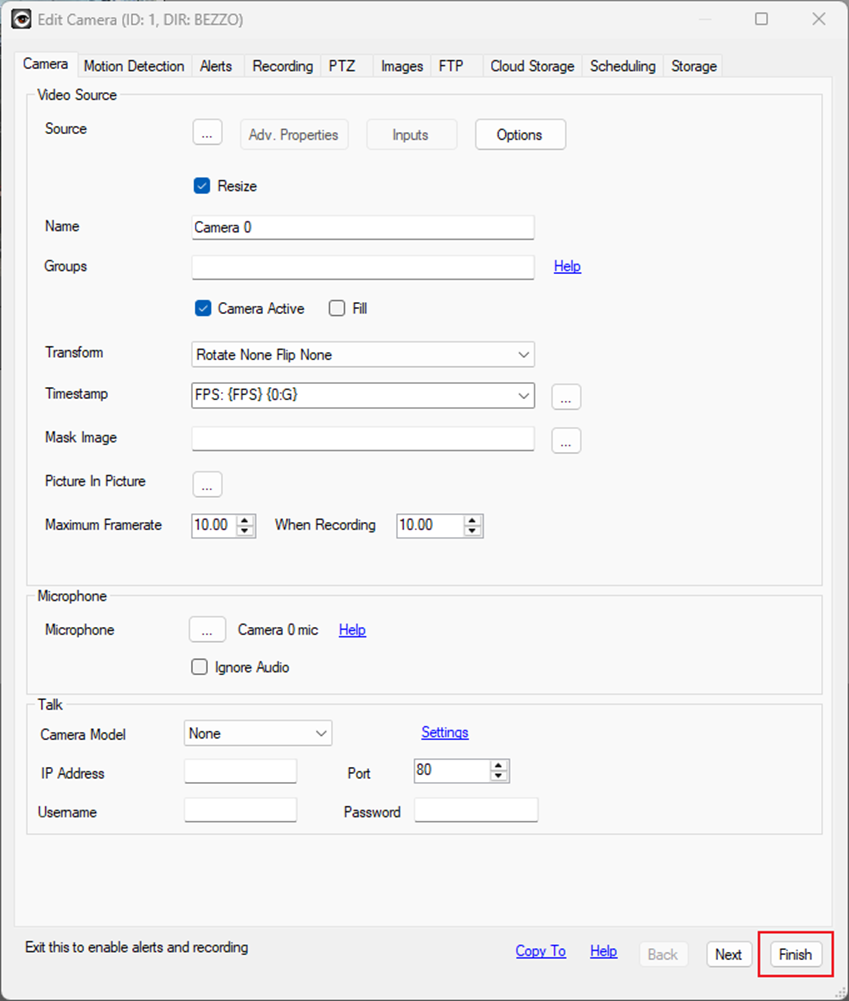
Step 6. After adding your Omada camera to iSpy, you can monitor and manage it using the software. View the live feed, customize motion detection, check recordings when motion is detected, set recording schedules, record videos, and more.
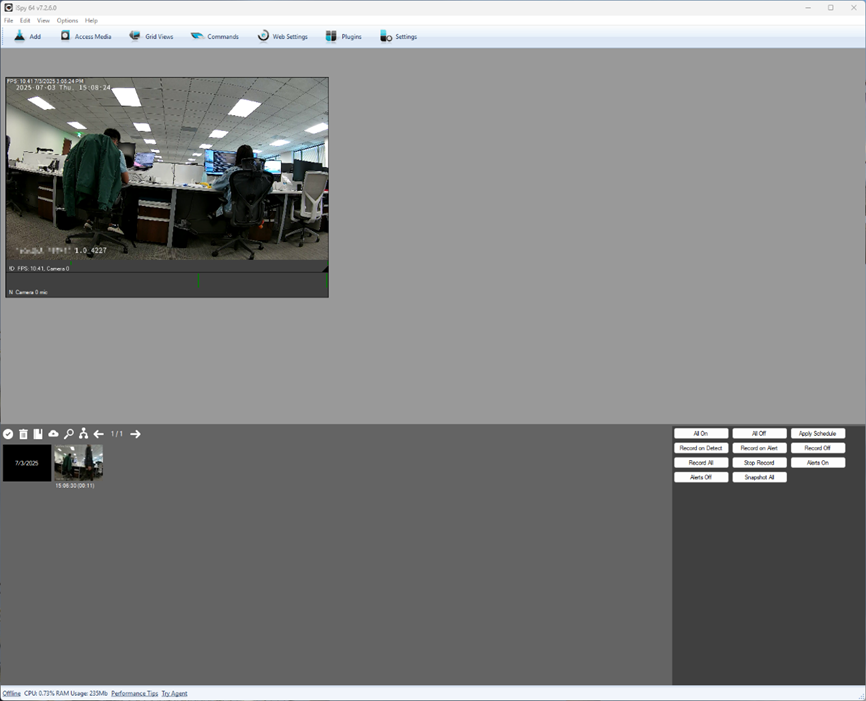
Added using RTSP protocol
When the ONVIF Profile is not supported on a third-party device, Omada Cameras can also enable live streaming on third-party platforms via the RTSP protocol. However, the Omada Camera settings cannot be modified at this time.
The URL of the RTSP live stream for the Omada cameras will be:
- For high quality stream1: rtsp://IP Address/stream1
- For low quality stream2: rtsp:// IP Address/stream2
In some software, the URL needs to include the port to access the live stream:
- For high quality stream1: rtsp://IP Address: 554/stream1(rtsp://192.168.1.108:554/stream1)
- For low quality stream2: rtsp:// IP Address: 554/stream2 (rtsp://192.168.1.108:554/stream2)
- RTSP Service Port: 554 (default)
Configuration example: the VLC software
Step 1. Open the VLC software, select Media > Open Network Stream
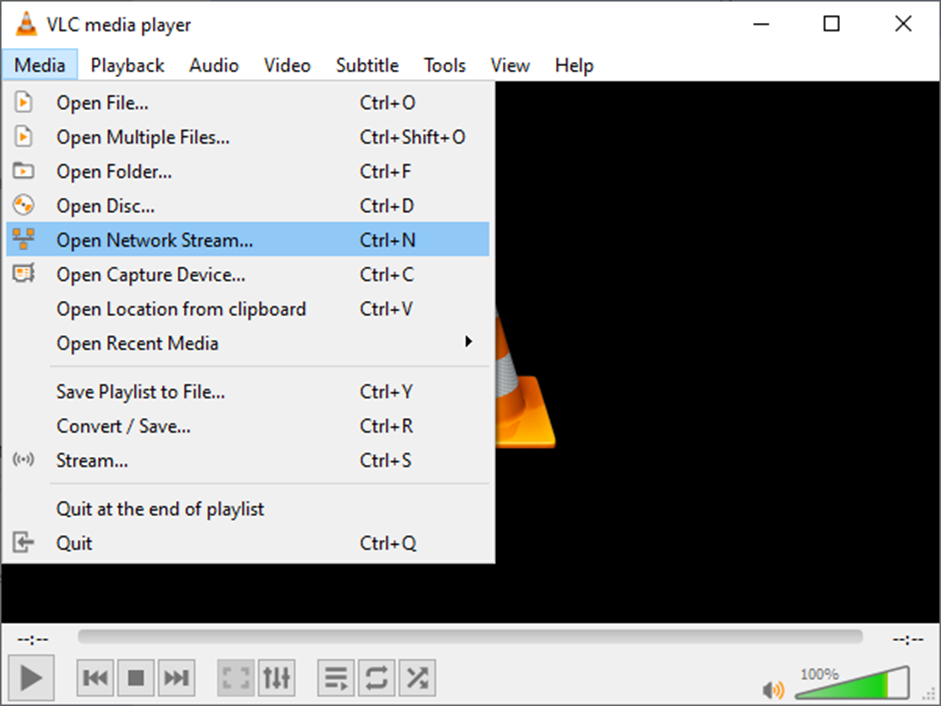
Step 2. Fill in the URL of the Omada camera
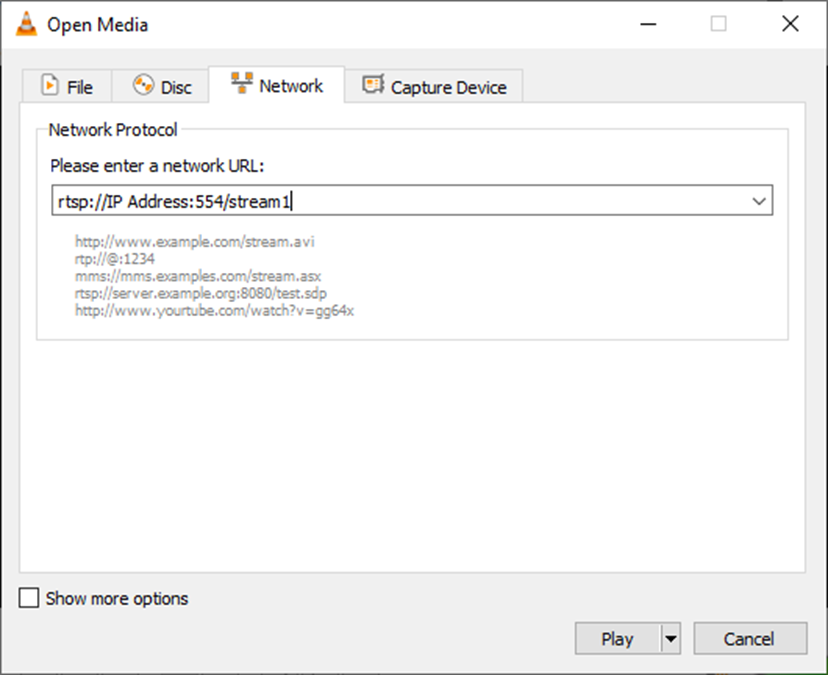
Notes:
- Username: admin (default and cannot be changed)
- Password: It is set when you activate the camera. If you forget your password, please refer to the How to recover or reset the device password to reset it.
Conclusion
With the steps above, you have successfully added Omada Camera to a third-party NVR, NAS, or software.
QA
Q1: How can I view the live stream of the Omada camera remotely from another network?
A1: You can set up a VPN network or use your router's port forwarding feature to allow external devices to access the public IP and reach the camera. However, please note that the RTSP/ONVIF protocols are not highly secure, so it is not advisable to expose the camera to a public IP via port forwarding for long periods. It is recommended to use a secure, encrypted VPN network.
Q2:What ports are used by the Omada camera for RTSP/ONVIF?
A2: The Omada camera uses the following ports for RTSP/ONVIF:
ONVIF Service Port: 80
RTSP Service Port: 554
Q3:Does the Omada Camera support two-way audio when connected via RTSP/ONVIF?
A3: Currently, the first released firmware can’t support the two-way audio feature via the ONVIF profile T. However, we can provide beta firmware to support it. We will also update the firmware later to support this feature. Please refer to the release notes on the TP-Link official website for more information.
Get to know more details of each function and configuration please go to Download Center to download the manual of your product.








